Content DNA is my book aimed at business owners who want to create an online presence that’s noticed, remembered and preferred.
This post looks at the self-publishing process I went through to get the book out into the world, including the expenses involved and the problems I faced along the way.
The costs I mention here from my service providers might not reflect what you need to pay. Do not use the “well, John paid only this much” line of reasoning to beat anyone up.
- Why I self-published my book
- Writing the manuscript
- Trademarking the name
- Book cover design
- Buying an ISBN
- Beta reading
- Copy-editing
- Typesetting
- Proofreading
- Indexing
- Ebook production
- Independent printing
- Amazon publication
- Posting paperback pre-orders
- Audiobook production
- Self-publishing costs
- Let’s wrap up
Why I self-published my book.
I’d heard other authors moaning about the traditional model of trying to find a publisher to support the creation and promotion of their books.
I took their wise counsel and decided to take control over my own publication of Content DNA. That meant I’d need to hire a team to help me with each stage of the process, which would mean a lot more upfront costs. But, I’d be in charge and the book would be what I wanted it to be – not what some publisher thought was best.
In June 2021, Mark Schaefer did an excellent interview on Doug Burdett’s Marketing Book Podcast about the process of planning and publishing a book. This is essential listening: How to write a marketing book.
Writing the manuscript.
This took the longest time but it’s also the bit you’re probably least interested in if you’re writing your own book.
My inspiration for the content of the book came from these places:
- my past blog posts
- my past successful social media posts
- my past copywriting client consultations
The big mistake I made was not to write out a load of chapter titles from the beginning.
Instead, I gathered lots of notes here and there, and then I later tried to fit them into a meaningful structure.
This meant I jumped around a lot in my thinking and ended up having to delete a lot of duplicated effort from my drafts.
I wrote one Word document per chapter. I started each with a relevant quote and a “Get to the point” section that would summarise the chapter.
Here’s the opening of chapter 13:
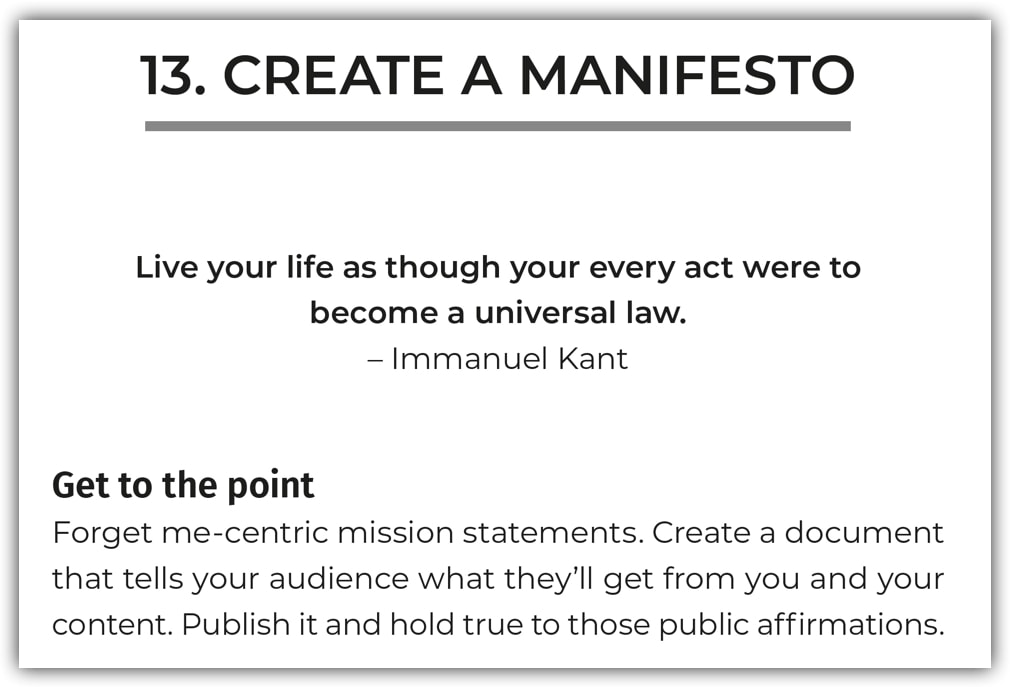
My aim was to publish the book in late April 2020 (which I did!) and that meant that I needed to finish writing the manuscript in early December 2019 (also nailed that).
Trademarking the name.
I knew it would take a while to write and publish the book, so I decided to trademark the name Content DNA in case anyone else nabbed it!
This cost £170 and I’ve already documented that process in How to trademark a name in the UK.
Book cover design.

I wanted to be able to promote the book and I knew that meant needing to show people a design for the cover.
I’d already hired Col Gray to design my new business logo, and it made sense to stick with him for the book cover as well.

The process was spread out over a while (I wasn’t in a rush at the time) but cost only £350.
The cost was low because Col had already done the groundwork for my visual brand, so this project was a natural extension to that.

Buying an ISBN.
Each book has an ISBN – it’s a 13-digit identifier. These aren’t free!
You also need a different ISBN for each format of the book. So, the paperback of Content DNA has a different ISBN to the ebook.
UK authors can buy ISBNs from Nielsen. In the US, it would be Bowker. Other countries have their own ISBN agencies.
If you were to publish an ebook via Amazon KDP, they could assign a free ISBN. However, this would mean that Amazon would be listed as the publisher rather than you. Probably not good.
In August 2019, I bought a block of ten ISBNs from Nielsen at a cost of £164. A single ISBN would have been £89 – not a good deal.

Kristina Adams.
You don’t need an ISBN for an ebook no matter how you publish. Amazon gives you an ASIN for an ebook rather than an ISBN.
Amazon charges you delivery costs on the 70% royalty rate, so the smaller your file, the better.
Books published via Ingram Spark are higher quality but not eligible for Amazon Prime. A lot of authors use KDP for Amazon books and Ingram for everywhere else because of this.
A couple of other aggregators worth investigating are Draft2Digital and Publish Drive. They’ll take a chunk of your profit but may make life easier. Aggregators will give you an ISBN.
Beta reading.
Once my Word documents for the manuscript were written, I passed them to a dozen volunteers for beta reading.
This is where the text is read and opinions are given. It’s not meant as a formal editing stage but rather as a way to collect earnest feedback about the content.
I kept the beta-reading schedule short to help me stay on track with my intended publication date. My readers were given just over a week to read the book and give me their thoughts.
Thanks to all the beta readers who helped:
- Nicole Duxbury
- Chloë Forbes-Kindlen
- Ginny Lemarie
- Heidi Medina
- Masooma Memon
- Vicki O’Neill
- Juana Poareo
- Sharon Wheeler
I have to give an extra special shout to Juana Poareo. She did a thorough edit of the content without being asked, spotting lots of issues that would help me avoid embarrassment before the content went to my editor.

Lisa Cordaro.
I would consider putting beta reading before editing, because feedback after a full professional edit can duplicate the process and intro new errors.
Authors may need to consider development editing, as they aren’t always writers but experts. They might need more than a copy-edit.
Copy-editing.

After beta reading, the Word documents needed to be edited professionally.
I approached Lisa de Caux – my star student on LinkedIn but also an experienced and capable editor – to do the honours.

I was reasonably confident about the content, so asked only for a light edit rather than a weighty structural review.
Lisa said that her work was more efficient because I used proper Word styles rather than inline styling. This is a good way to save money when you work with an editor.
She made her amendments by using Word’s Track Changes feature, so I could see what had changed. There were also a lot of comments in the margins for me to consider how best to phrase certain ideas.
The editing stage took almost a month and cost me £350.
Typesetting.

After I addressed all the comments and edits in the documents sent back by Lisa, I needed to get the manuscript in a format suitable for printing. This is what a typesetter does.
I hired Catherine Williams to turn my set of Word documents into a print-ready PDF.

At the start of the project, Catherine asked me what dimensions I wanted the book to be. It’s essential to know this when printing a physical product. I decided on A5, and that meant the dimensions ended up being 148mm (width) × 210mm (height) × 15.5mm (depth).
The typesetting took a couple of weeks, and I paid £695.
Catherine currently charges £645 for a book of up to 50,000 words including up to 30 images, plus £110 per additional 10,000 words.
(Content DNA is just over 56,000 words and the paperback is 248 pages long.)
Proofreading.

Once the typesetting was done, I had a PDF that was ready for another pair of eyes to review it for any small errors that might have been missed by the editor or introduced by the typesetter.
Some people use the same editor to do their proofreading, but I think it’s always best to involve someone else.
I hired Karen Morton for this task. The work took around 2 weeks and cost £400.

Karen did her work by adding comments to the typeset PDF. I reviewed these to approve or deny them, and then I passed the result back to Catherine to update her version of the PDF.
Indexing.

Proper business books come with proper indexes at the back.
I didn’t want to skimp on this and so hired Sophie Bradshaw to handle the indexing.

This was probably the most straightforward part of the whole process. I gave Sophie the typeset PDF and she returned a 3-page index for me to pass back to Catherine. Here’s a bit of it:
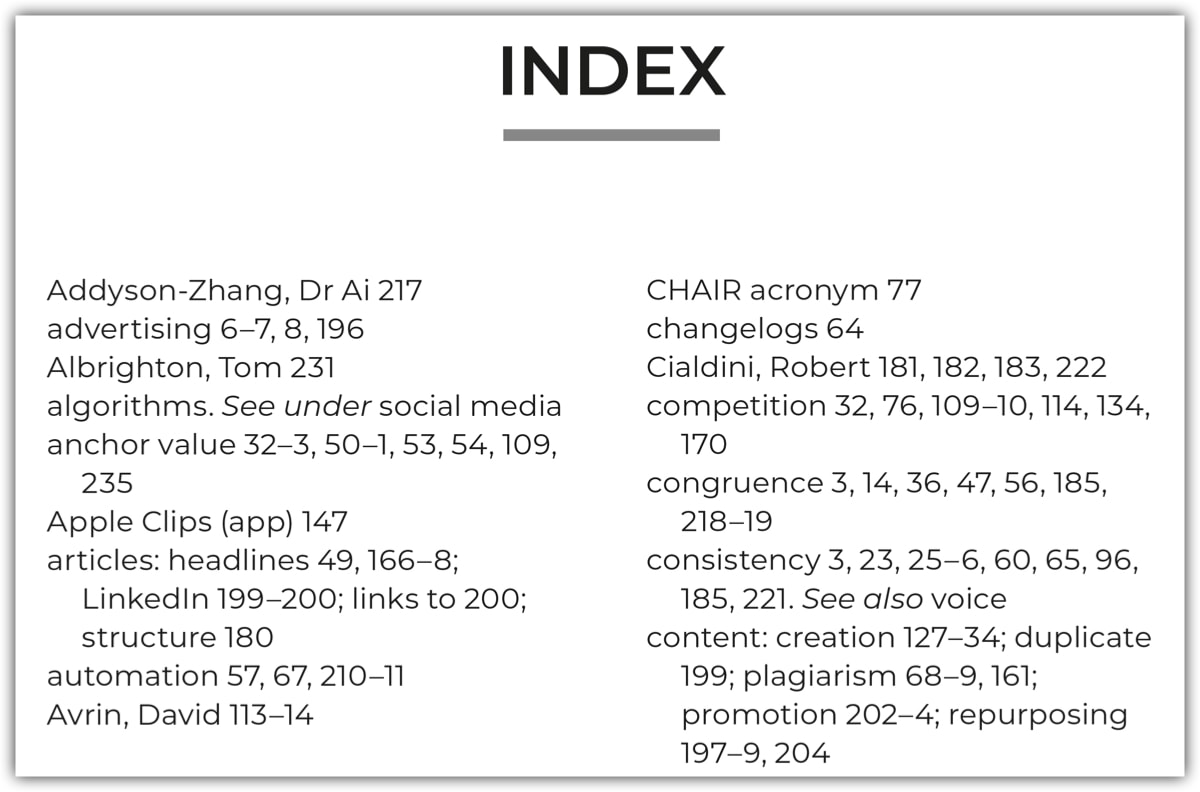
Indexing took around 2 weeks and cost £500.
Ebook production.

My early focus on the book was based on publishing a paperback. I’d never thought beyond that but when I started talking to people about the book, it became obvious that releasing an ebook was something that many took for granted.
An ebook is created from the final print-ready PDF of the book, so I knew I had to get the typesetting finished before this stage could happen.
The output of the process should be a reflowable ebook in both MOBI and ePub formats, to suit all ebook readers including Amazon Kindles.
I was told that the cost of PDF-to-ebook conversion would cost £0.30–£0.60 per page, depending on the complexity of the work.
I was recommended to approach Gemma Prytherch at AcePub. She asked for some sample pages so she could do a sample treatment of the ebook conversion.

I paid £170 to get the ebook created and for AcePub to manage the publication of the print and ebook to Amazon.
We were originally going to publish to Amazon via a couple of routes: IngramSpark and Amazon KDP.
As IngramSpark is meant to include the benefits of publishing direct to Amazon, it didn’t feel necessary to do the KDP bit, so we dropped that from the plan. This would turn out to be a mistake (I get to that below).
The cost for getting the print book and ebook listed through IngramSpark was £49. An issue with the book cover artwork dimensions meant that a tweaked cover design needed to be submitted, and that meant paying IngramSpark another £25.
Independent printing.
I wanted to make the book available to pre-order through my website, so that meant I needed an initial batch of books printed.
Catherine (my typesetter) recommended Inky Little Fingers.
Their helpful content and online quote generator convinced me to give them a go, and their customer service team were good as I worked out what I needed from them.
I paid for a test print of the book, to check the quality of the result before committed to a big order.
The test print cost £54.32 for a single book, and the follow-up print run of 400 books cost £1772.72 (£4.43 per book).
I’m glad I did the test print, as it revealed an error on the back cover. I had to get Col to update the artwork to fix this.
Somehow, an extra letter had appeared seemingly randomly in the blurb text. This happened after I’d signed off the correct artwork and then Col had updated it to add the ISBN and barcode. He hadn’t done anything wrong and yet a gremlin had snuck in to put this weird PDF artefact on the back cover.
I didn’t imagine that a small change could possibly introduce a new text error elsewhere in the PDF. But this was a good lesson: if ever you update PDF art, you have to check the whole thing again in case some new problem has arisen.
Amazon publication.
This was the bit that I wasn’t worried about at all. I thought Amazon publication and reporting would have to be the slickest process ever. How wrong I was!
We’d submitted the book via IngramSpark and that led to a pre-order page appearing on Amazon on 18 April 2020. I found out about that only because my editorial buddy Kathie York had spotted it and emailed me about it.
My pre-order page was listed with my name back to front, which turned out to be an issue with the way the fields had been set up in IngramSpark.
The fields weren’t editable for a few days, so I had to put up with my first appearance on Amazon being shown as Espirian John.
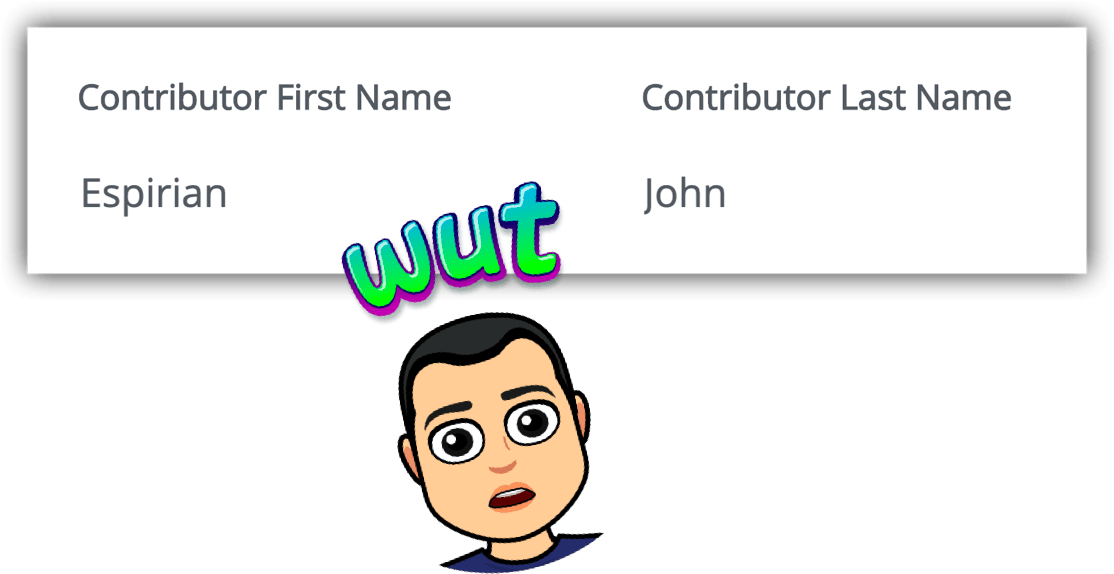
I posted on LinkedIn about my unexpected pre-order page, and let everyone know that the official release date would be on 21 April 2020.
I had no visibility of how the unexpected pre-ordering was going, but I could tell that some people were taking interest, because Gillian Whitney and Jules White each sent me screenshots to show that the book was trending in the branding and logo design category:
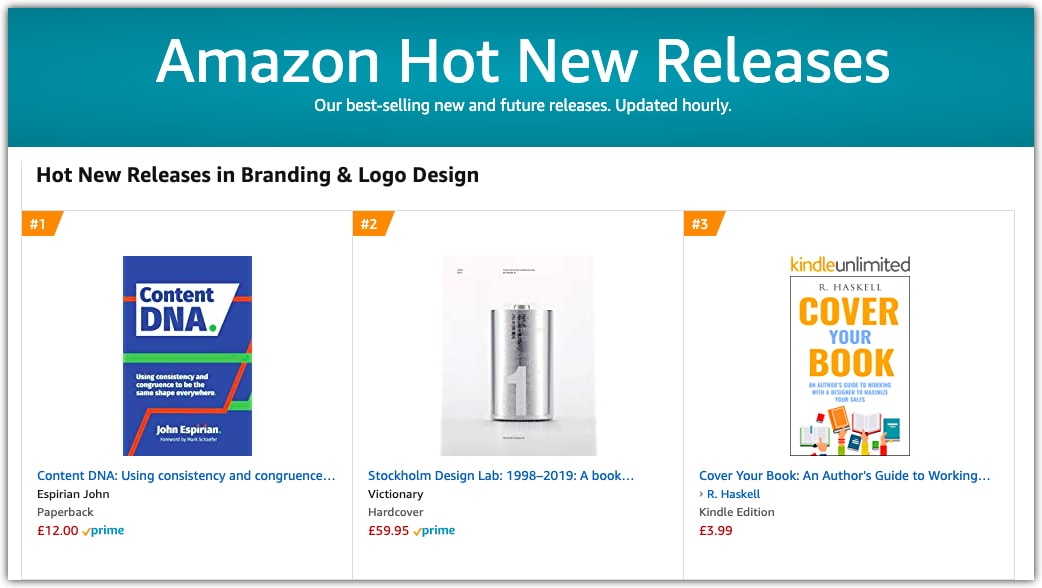
Seeing the book listed like this confirmed that it was eligible for delivery via Amazon Prime.
The real problems started when we got to the day of release on 21 April 2020.
Instead of being shown as available, the book was immediately marked as being “temporarily out of stock”. Even worse, it was shown as being available at a much higher price via Book Depository.
So, there I was, promoting the book launch and telling people they could buy the paperback for £12 (the intended launch price) and yet that wasn’t actually possible.
I’d planned for the ebook to launch on Amazon on the same day as the paperback, and that didn’t happen either.
I went back and forth a bit with Gemma at AcePub. She was helpful and it looked as through the issues were related to IngramSpark.
We took the decision to quickly switch to publishing via Amazon KDP. Lo and behold, the availability and price issues went away after about 24 hours. The ebook also appeared at last.
There were a few days where Amazon was displaying the paperback and ebook on separate URLs rather than listing them together on the same page. This corrected itself and then I could see the familiar tabs that are shown with most books:
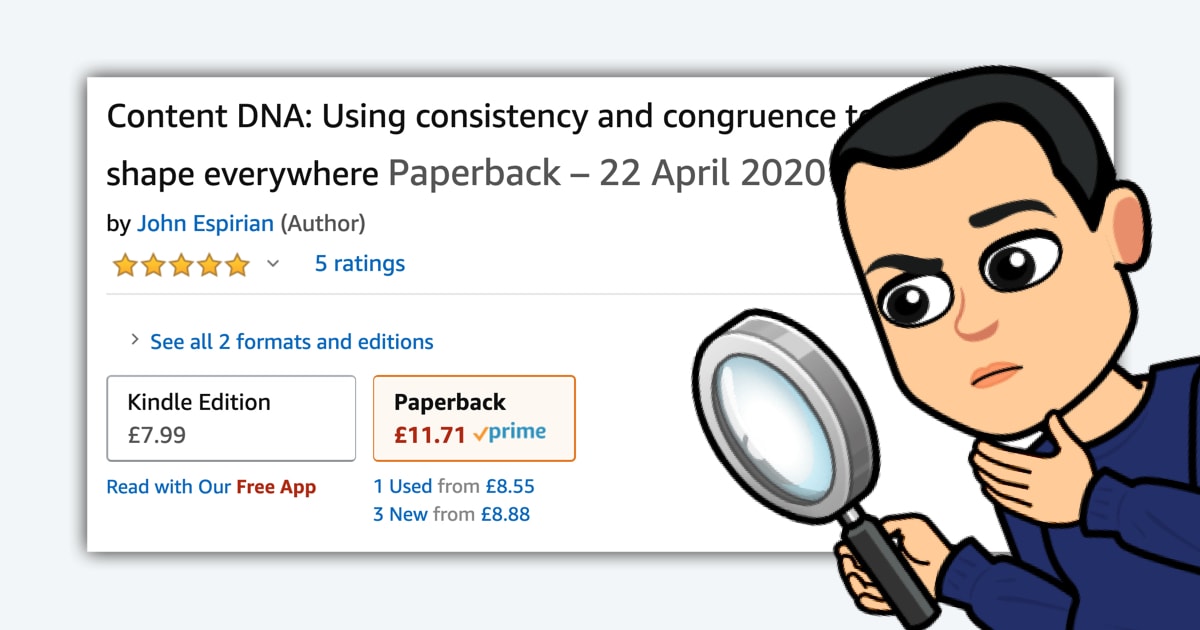
My thoughts then turned to trying to track how many sales I was making.
IngramSpark’s admin panel is frankly terrible.
Amazon KDP’s admin panel is much better but still far from ideal.
I did a check of the stats across both systems after 17 days of the book being available and saw these results:
- 128 units sold
- 52 ebooks
- 76 paperbacks
- £571.93 in royalties (£4.47 per book)
Here’s what I see for the royalties in Amazon KDP’s backend – listing the paperback first and the ebook second.
It shows that even though the ebook is cheaper than the paperback, its royalties are much better for me.
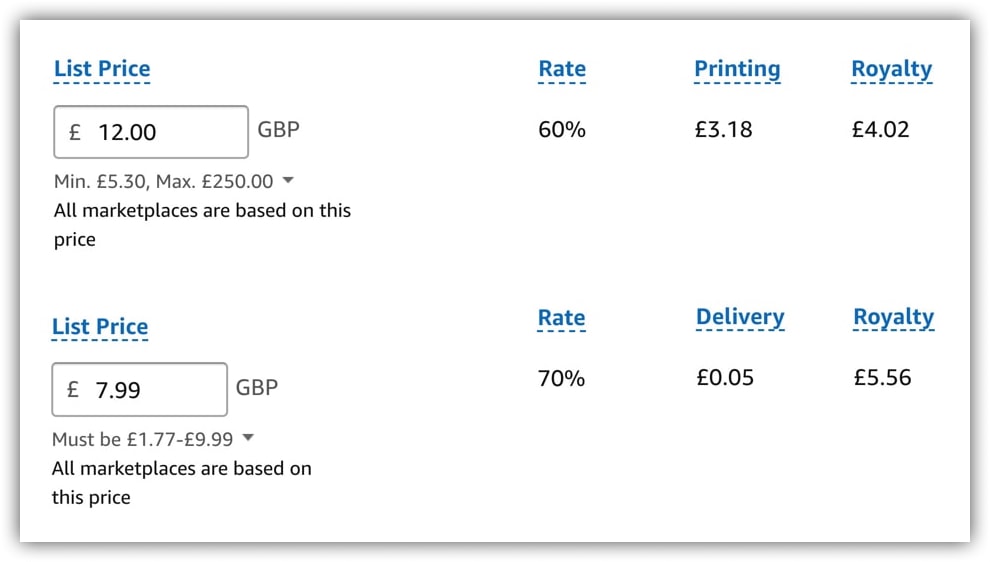
Posting paperback pre-orders.
This was meant to be a no-brainer. Hmm …
I’d set up my website months in advance to let people send me their name and address and to pay to pre-order the book via PayPal.
I received 243 pre-orders through this route. And then coronavirus came along and messed everything up! My independent print run was delayed a bit, and I had to put the books through quarantine when they finally arrived.
After that, I signed the books and then had to organise a safe way to post them all out while minimising my exposure to the outside world.
I sought help from my business support buddy Louisa van Vessem to get the postage task sorted.
She found that the best option was to get the books collected from my home and delivered by The Direct Mail Company.
At the time of this update (early June 2020), all my UK pre-orderers have received their books, and international orders are arriving, too.
Audiobook production.
I hadn’t originally considered creating an audio version of the book. But when I posted about it on LinkedIn and received ~85 expressions of interest, I knew there was likely to be enough demand to justify making the effort.
I decided to narrate the audio myself and, after a helpful coaching session with ex-BBC voiceover artist Samantha Boffin, I started recording the audio for each chapter. (I did this work while the paperback was off being produced and prepped for printing.)
I couldn’t manage to record more than a couple of chapters per day, and I had to do a lot of editing to remove coughs and splutters and all sorts of other mistakes.
The full audiobook is 6 hours 50 minutes long, and it took about a month for me to record and edit it.
I knew I wanted the audiobook published on Audible but rather than go direct there, I used a third-party website called ACX, which caters for uploading and distributing audio to Audible, Amazon and iTunes.
As well as getting my chapters recorded, I had to record a short intro and outro for ACX. And I had to provide a sample of the recording to be used for promotional purposes, so I chose a 5-minute segment from chapter 27. Here it is:
(You can also listen to the first 6 chapters if you visit my book page.)
When I uploaded my audio files to ACX, I found that some of them failed ACX’s quality checks and were therefore rejected.
As I don’t have much expertise with audio editing, I knew I’d need help. Samantha recommended Rob Bee, who took only a couple of days to fix the issues with the source files. That cost a mere £52.50 and saved me a lot of hassle.
I submitted the fixed audio files via ACX on 23 April 2020.

ACX reported that publication would take up to 30 business days. The audiobook was actually published on 11 May 2020, only 18 days after submission.
During the submission process, I learned that the audiobook cover art needed to be square rather than in portrait format. This meant that I needed to tweak the cover design. You can see from the image below that the cover looks a little fat because of this.
Audible sometimes puts overlay graphics in the bottom-right corner of the book images, so I had to move my name to avoid it potentially being obscured.

Self-publishing costs.
I’ve mentioned the costs throughout the article, but let’s pull it all together in one place.
| Item | Cost |
|---|---|
| Trademark | £170 |
| Book cover | £350 |
| ISBNs | £164 |
| Copy-editing | £350 |
| Typesetting | £695 |
| Proofreading | £400 |
| Indexing | £500 |
| Ebook production | £170 |
| IngramSpark | £74 |
| Independent printing | £1827.04 |
| Audiobook editing | £52.20 |
| Total | £4752.54 |
September 2021 was my biggest ever month of audiobook revenue for Content DNA on Audible … and I made $39.71 (US dollars).
Just putting that out there in case anyone thought the streets were paved with gold when you publish a book.
— John Espirian (@espirian) October 28, 2021
Note that the independent printing of 400 books is the largest component in the costs but that I’ll get that money back in pre-order sales and in selling the remaining books at future events.
If we ignore paying for the independent print run, the other costs would come to £2925.50.
Let’s wrap up.
I’ve written this so that other prospective authors can get a realistic idea of the self-publishing process.
It’s taken around 2 years to go from concept to finished paperback, ebook and audiobook. It’s been a labour of love and I’m proud of what I’ve produced.
If you want to check out the result of all my effort, head over to Amazon:


